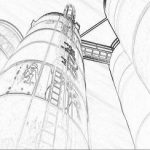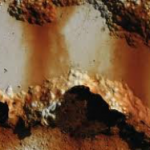Maintenance of Feed and Grain Mill
Feed and Grain Maintenance
 Common maintenance needs for a feed and grain mill factory include regular equipment inspections, lubrication of machinery, cleaning of processing equipment to prevent contamination, monitoring conveyor systems for wear and tear, and ensuring proper functioning of safety mechanisms.
Common maintenance needs for a feed and grain mill factory include regular equipment inspections, lubrication of machinery, cleaning of processing equipment to prevent contamination, monitoring conveyor systems for wear and tear, and ensuring proper functioning of safety mechanisms.
Regularly checking electrical systems, motors, and belts, as well as maintaining proper ventilation systems, are also crucial. Additionally, it’s important to inspect and replace parts such as screens and hammers in milling equipment to maintain efficiency and product quality. Regular training for staff on safety protocols and equipment operation is essential for smooth operations.
Cleaning Processing Equipment
Cleaning processing equipment in a feed and grain mill is critical to prevent contamination and ensure product quality. Here’s an elaboration on this process:
1. Regular Cleaning Schedule: Establish a routine cleaning schedule based on the frequency of production and the type of materials processed. High-traffic areas and equipment involved in handling raw materials should be cleaned more frequently.
2. Dry Cleaning: Remove dry residues, dust, and debris from equipment surfaces using brushes, compressed air, or vacuum systems. This prevents the buildup of materials that could contaminate the final product.
3. Wet Cleaning: Use appropriate cleaning agents and sanitizers to wash down equipment surfaces. This step is crucial for removing oils, fats, and other residues that may accumulate during processing. Ensure that the cleaning agents used are safe for food-grade applications.
4. Disassembly for Thorough Cleaning: Periodically, disassemble components of the processing equipment to clean hard-to-reach areas thoroughly. This may include removing screens, blades, and other parts for a comprehensive cleaning.
5. Inspect and Clean Conveyors: Check conveyor belts for signs of wear and tear, and clean them regularly to prevent the accumulation of contaminants. Lubricate conveyor systems as needed to maintain smooth operation.
6. Dust Collection Systems: Ensure that dust collection systems are in place and functioning effectively. Dust and particles generated during processing can lead to contamination and pose safety risks.
7. Prevent Cross-Contamination: Implement measures to prevent cross-contamination between different batches of materials. This may involve segregating processing lines or thoroughly cleaning shared equipment between different products.
8. Documentation: Keep detailed records of cleaning procedures, including the cleaning agents used, cleaning frequency, and any issues encountered. This documentation is essential for compliance with food safety regulations and for troubleshooting potential problems.
9. Employee Training: Train personnel on proper cleaning procedures, including the use of cleaning agents, disassembly and reassembly of equipment, and the importance of maintaining a clean working environment.
10. Validation and Verification: Regularly validate and verify the effectiveness of the cleaning procedures. This may involve testing for microbial contamination or conducting visual inspections to ensure that equipment is free from residues.
By following these steps, feed and grain mill factories can minimize the risk of contamination, comply with food safety standards, and maintain the quality of their products.


